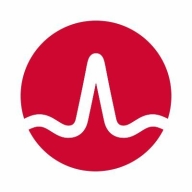

Find out what your peers are saying about Nexthink, Splunk, Lakeside Software and others in Digital Experience Monitoring (DEM).
| Product | Market Share (%) |
|---|---|
| DX SaaS | 1.5% |
| Nexthink | 19.4% |
| ThousandEyes | 12.5% |
| Other | 66.6% |
| Product | Market Share (%) |
|---|---|
| Nagios XI | 3.0% |
| Zabbix | 8.2% |
| Datadog | 4.1% |
| Other | 84.7% |

| Company Size | Count |
|---|---|
| Small Business | 22 |
| Midsize Enterprise | 17 |
| Large Enterprise | 21 |
Dx SaaS is a solution whose goal is to ensure that businesses and organizations can monitor and manage the way that users experience their applications. This solution contains many powerful tools that are designed to give administrators the maximum amount of control over the experiences that clients have when employing their applications. Organizations and businesses can rest easily and ensure that the product they put out into the world is always being watched for potential issues that will be resolved proactively and quietly.
Dx SaaS Benefits
Some of the benefits that come from using Dx SaaS include:
Dx SaaS Features
When users choose to employ the DX SaaS solution, they gain access to many different capabilities. These features include:
Reviews from Real Users
The DX SaaS solution enables companies and organizations to take charge of the digital experiences that their customers receive. It is designed in a way that empowers these companies to truly monitor their applications and maintain a positive user experience. DX SaaS recognizes that applications can be run on any number of platforms. As a result, solutions that monitor and analyze applications need to be capable of handling a wide variety of platforms. This is one of the considerations that the solution’s designers made integral to its design.
Administrators can leverage DX SaaS to spot potential issues before they can become problems for the users of their applications. DX SaaS has metrics that can provide application administrators with important insights. Patterns and areas where trouble can arise are immediately exposed so that administrators can take the steps that are necessary for the applications to run smoothly.
A consultant at a technical services company writes, “It supports numerous platforms.” Furthermore, they add, “The CA APM blaming metrics are quite useful in identifying a potential issue.”
Nagios XI provides monitoring of all mission-critical infrastructure components, including applications, services, operating systems, network protocols, systems metrics, and network infrastructure. Third-party add-ons provide tools for monitoring virtually all in-house and external applications, services, and systems.
Nagios XI uses a powerful Core 4 monitoring engine that provides users with the highest levels of server monitoring performance. This high degree of performance enables nearly limitless scalability and monitoring powers.
With Nagios XI, stakeholders can check up on their infrastructure status using the role-based web interface. Sophisticated dashboards enable access to monitoring information and third-party data. Administrators can easily set up permissions so users can only access the infrastructure they are authorized to view.
Nagios XI Benefits and Features
Some of the benefits and top features of using Nagios XI include:
Reviews from Real Users
Nagios XI stands out among its competitors for a number of reasons. Several major ones are its integration options and monitoring abilities, as well as its alerting features.
David P., a senior DevOps engineer at EML Payments Ltd, writes, “We use Nagios as a network discovery tool. We use Nagios to maintain our uptime statistics and to monitor our services. It has allowed us to be much more sophisticated in our monitoring and alerting.”
An IT-OSS manager at a comms service provider notes, “Nagios XI has a custom API feature, and we can expose custom APIs for our integration. This is a great feature.”
We monitor all Digital Experience Monitoring (DEM) reviews to prevent fraudulent reviews and keep review quality high. We do not post reviews by company employees or direct competitors. We validate each review for authenticity via cross-reference with LinkedIn, and personal follow-up with the reviewer when necessary.